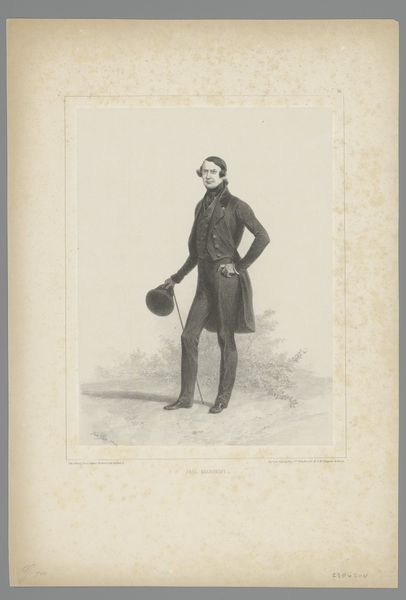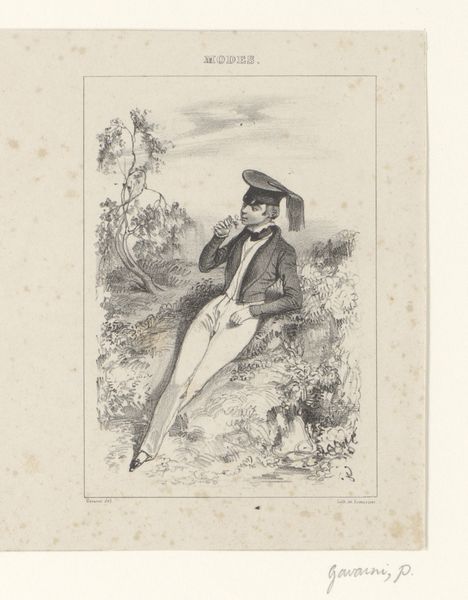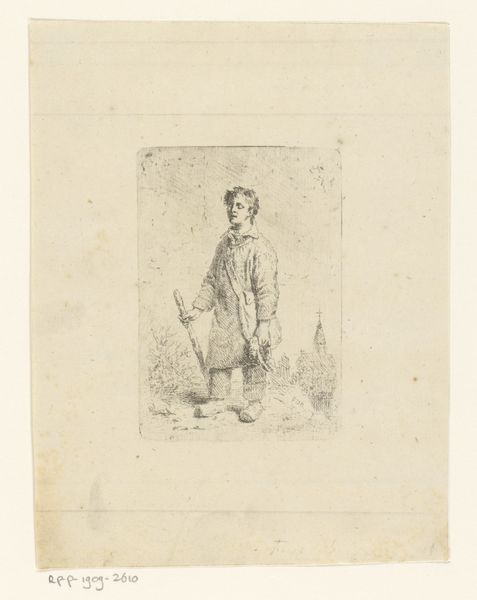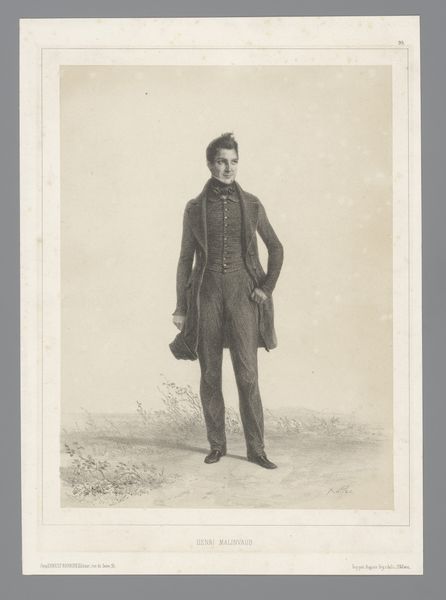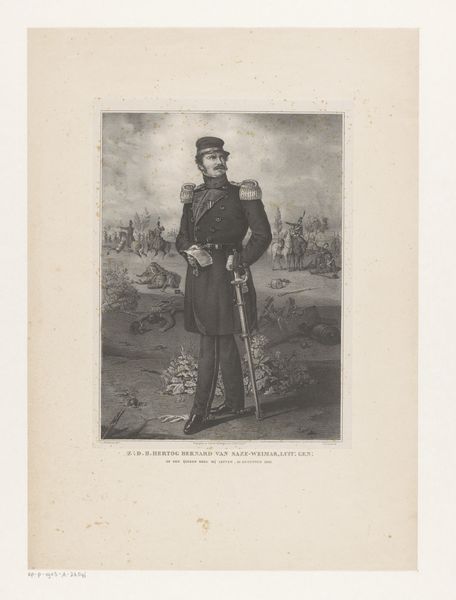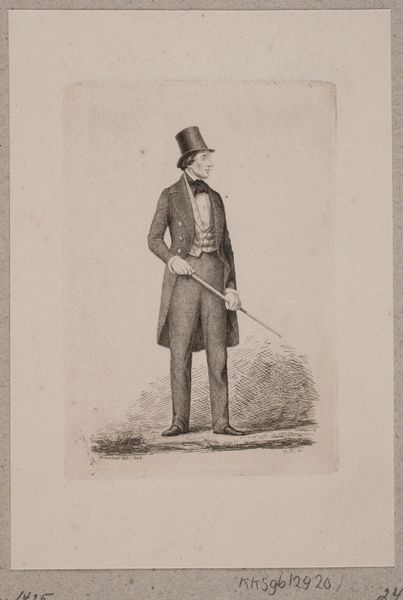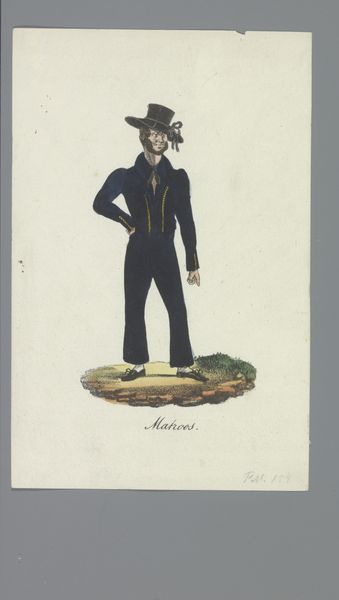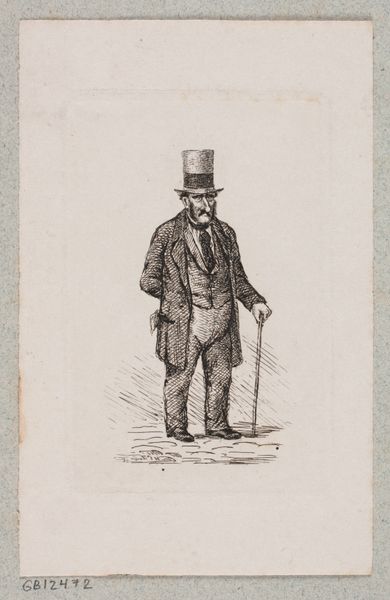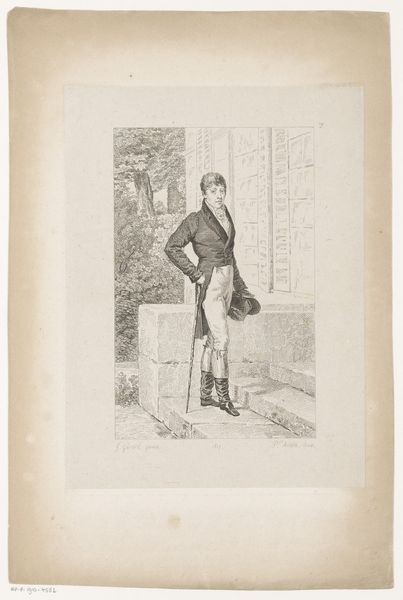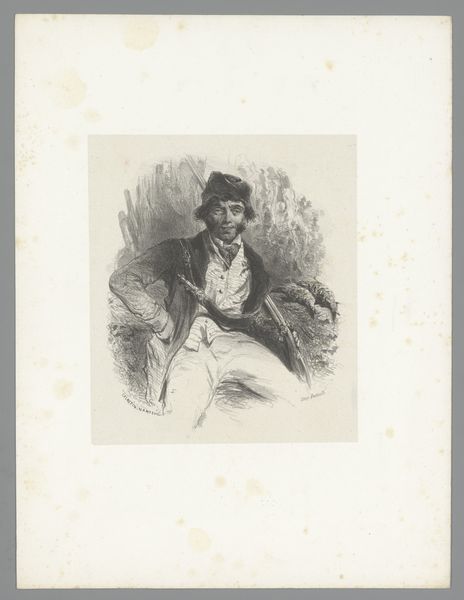
engraving
#
portrait
#
16_19th-century
#
academic-art
#
engraving
#
realism
Dimensions: height 358 mm, width 269 mm
Copyright: Rijks Museum: Open Domain
Auguste Raffet made this portrait of Alexandre Nordmann using lithography, a printmaking technique that democratized image production in the 19th century. The print offers us a glimpse into the visual codes of bourgeois masculinity in the mid-1800s. Nordmann, likely a member of the upper class, is depicted in a formal suit, complete with a top hat and cane. The setting appears to be a park or garden, suggesting a life of leisure and privilege. Raffet was working in France during a time of significant social and political upheaval. The July Revolution of 1830 had just replaced one king with another, but the rising bourgeois class was eager to see their values represented in the cultural sphere. Prints like this, widely circulated, played a role in the construction of class identity. Understanding this print requires us to consider the social conditions of its making. Researching the print's production, distribution, and reception reveals its complex relationship to the institutions of art and the broader currents of social change.
Comments
No comments
Be the first to comment and join the conversation on the ultimate creative platform.
